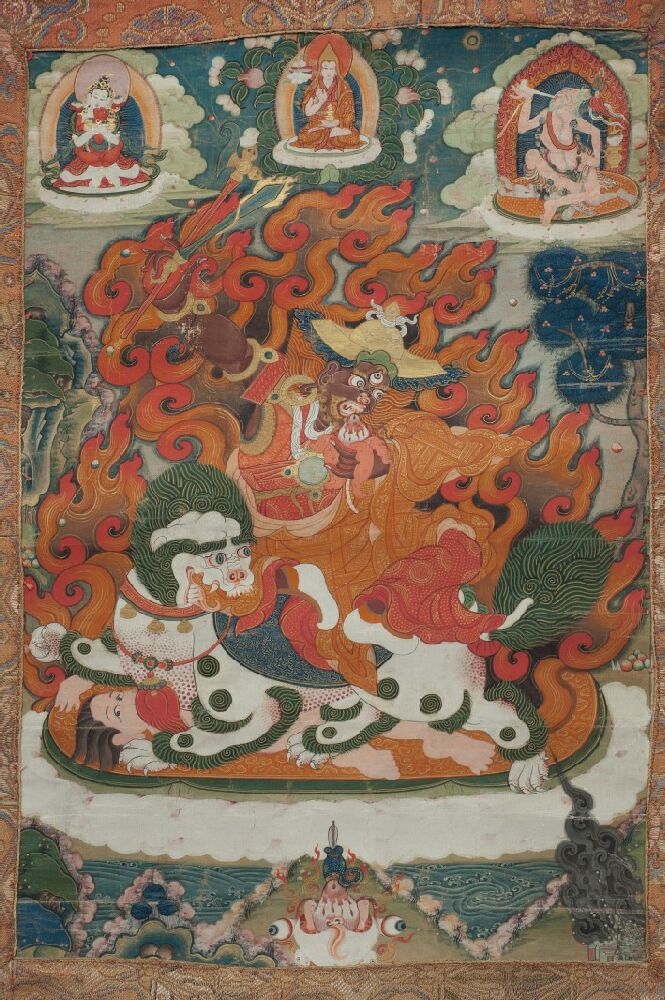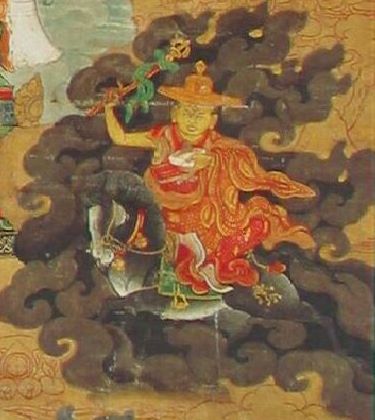Buddhist practice and Buddhist art have been inseparable in the Himalayas ever since Buddhism arrived to the region in the eighth century. But for the casual observer it can be difficult to make sense of the complex iconography. Not to worry—Himalayan art scholar Jeff Watt is here to help. In this “Himalayan Buddhist Art 101” series, Jeff is making sense of this rich artistic tradition by presenting weekly images from the Himalayan Art Resources archives and explaining their roles in the Buddhist tradition.
Controversial Art, Part 1: Dorje Shugden
There are several different qualities that can make a piece of art controversial. Sometimes it’s the content of the image itself which is deemed offensive, and other times it might be what is symbolized, the medium, or the intention of the work. Many of the subjects depicted in Himalayan and Tibetan-style art have controversial elements, but few can generate the heated emotions and fear conjured by the mere mention of the name Dorje Shugden. Despite this, artistic depictions of the deity have rarely if ever been talked about or studied. Art, as it turns out, provides a unique perspective into a highly charged conflict.
The religious and political controversy involves the very nature of Dorje Shugden. Some religious groups believe that he is a beneficent deity and an emanation of either Manjushri or Avalokiteshvara. Others believe him to be a harmful and dangerous ghost that should no longer have a place in the Buddhist pantheon.
Looking at the chronology of artworks with Dorje Shugden is really the most interesting approach. There are, however, very few examples of painting or sculpture. The vast majority of works depicting Dorje Shugden were created in the 20th century. Only three paintings have been identified that can be dated to the 18th and 19th centuries, and they depict the Sakya form of the deity seated atop a black horse. Furthermore, all three examples only depict the deity as a minor figure—never the central subject of the composition.
 There are two common versions of Shugden iconography depicting a monk figure wearing a gold riding hat, seated atop either a black horse or a lion. The black horse has been traditional for the Sakya tradition since as far back as the 18th century. The figure seated atop a lion, on the other hand, is standard for the Gelug tradition, and likely dates to the mid- to late 19th century.
There are two common versions of Shugden iconography depicting a monk figure wearing a gold riding hat, seated atop either a black horse or a lion. The black horse has been traditional for the Sakya tradition since as far back as the 18th century. The figure seated atop a lion, on the other hand, is standard for the Gelug tradition, and likely dates to the mid- to late 19th century.
We can track the importance of Dorje Shugden in the Gelug tradition by consulting refuge paintings, a style of painting that the Gelug has led since the 17th century. The intention of such paintings is to depict the essential sources of Buddhist refuge, lineage teachers, deities and protectors. Refuge field paintings have also come to represent sectarian identification, with paintings from different schools selectively depicting only their specific lineage teachers, unique meditational deities, and special protector deities. After surveying over 67 Gelug refuge field paintings on Himalayan Art Resources primarily dating from the 18th and 19th centuries, I found that not one of those paintings depicts the figure of Dorje Shugden.
Although Dorje Shugden has been around since the writing of a ritual text by Morchen Kunga Lhundrub (1654–1728) in the 17th century, the deity remained a very minor protector figure in the Sakya school. Based on the lack of Dorje Shugden art in the Gelug school prior to the end of the 19th century, we can assume that the deity was not popular within that tradition until then.
Continue to Part 2: The Svastika
Thank you for subscribing to Tricycle! As a nonprofit, we depend on readers like you to keep Buddhist teachings and practices widely available.
